This is a free fortnightly newsletter about the New Zealand Net. If you would like to be notified by email when a new edition is published, please contact ZL1NZ.
Browse our Newsletter Archive and List of Net Tips.
Featured key
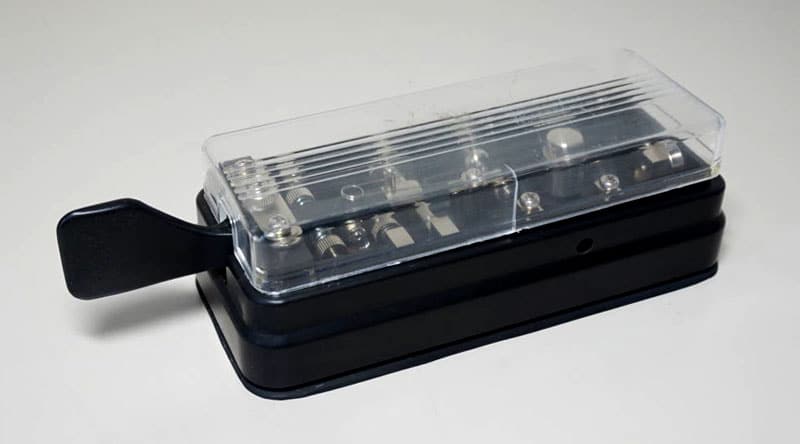
Hi-Mound BK-100 bug. The plastic covers were a great idea, but prone to cracking, as seen in this example. Fortunately, replacement covers can be purchased from Vibroplex (although they seem to always be out of stock).
By Herman VK2IXV
The Japanese BK-100 bug was sold mainly in the USA, by different dealers under different names, like Hi-Mound Electro Company Ltd, Dentsu-Seiki, Hi-Mound BK-100, Skillman, Calrad TK-12, Monarch KY-102 and many others.
I bought mine in Singapore in the 1960s, and used it when I was a Radio Officer on Dutch merchant ships sailing in the Far East.
The founder and president of both Dentsu-Seiki Co Ltd and Hi-Mound Electro Co was Takaitsu Takatsuka. Born in 1911, he was interested in radio from an early age. He obtained a Second-Class Radio Certificate in 1929 and a First-Class Radio Certificate in 1931.
In 1932 Mr Takatsuka joined the Japanese Navy as a Wireless Operator. He had various other wireless-related jobs in the Armed Forces until his discharge in 1946.
After the war he continued his radio and electronics career. In 1953 he founded his own company in Tokyo, the Dentsu-Seiki Co, which went bankrupt in 1964. However, this did not deter Mr Takatsuka and in 1968 he established another electronics company, the Hi-Mound Electro Co.
The name Hi-Mound was derived from the company president’s surname: Taka means High and Tsuka means Mound.
Mr Takatsuka died on 28 February 2003, aged 92, and he was succeeded by his son Gouzo Takatsuka.
Two styles
All the BK-100 bug keys look basically the same, but there was the older type and the newer type.
The original model, made by Dentsu-Seiki, has slotted-head screws, an orange colour under the base, sits on 4 non-slip feet and has a cream and gold label. The word JAPAN is written on the bottom’s edge underneath.
The later model, made by Hi-Mound Electro (Haimondo Erekutoro), uses Phillips-head screws, has a full-length adhesive gummed pad under its base, has a black and chrome label and the top and bottom pivot cup has ball bearings. The cover is a very tight perspex one and I have not seen many without a crack.
* If you have an interesting key for this feature, please send me a nice clear photo and a few words describing it.
Quick notes
HNY to all. It seems weird to type Happy New Year, given the parlous state of the world, so I’m sticking with the telegraphist’s traditional HNY. But I do hope that all of our Net Members and friends have a safe and peaceful 2022.
Other signals on 3535.0. A couple of days ago I was getting ready to start the net, when I heard weak CW signals on our usual frequency, so I moved up 1 kHz to avoid interfering with them. Then I noticed on the spectrum display that the signals stopped when I began sending the net preamble at 0800Z. Gerard ZL2GVA has the explanation: “This is the 0700-0800 UTC CWOps Test session. It finishes before we start at 2100 NZ time, so no need to QSY to avoid them. But when you listen a few minutes before 2100 you may wonder if we have to.” Good to know.
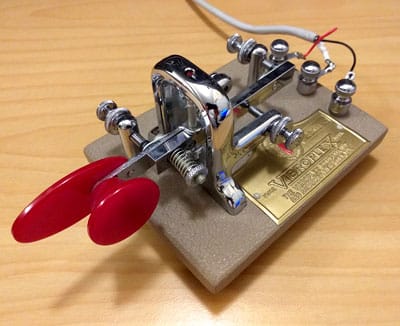 Key changes: Peter ZL1PJH has acquired some Galbraith dual-lever paddles for use in his CW Academy course which requires ops to use paddles.
Key changes: Peter ZL1PJH has acquired some Galbraith dual-lever paddles for use in his CW Academy course which requires ops to use paddles.
Neil ZL1NZ remains devoted to single-lever paddles, and has recently switched from a Bencher ST-1 to the 1969 Vibro Keyer pictured here. “The Bencher is nice, but the Vibroplex is beautiful and suits my boat anchor rigs.”
Thursday meets Friday. During his summer holiday trip, our Thursday NCS Steve ZL2KE (Masterton) dropped in on Friday NCS Gerard ZL2GVA (Blenheim). This was the first meeting of these two hams, and no doubt they had lots of net control stuff to talk about, as well as admiring Gerard’s loop antenna.
Net numbers
The final session of NZ Net for 2021 was on New Year’s Eve, and was the 724th session of the net.
During 2021, we logged 2272 check-ins to the net, and handled 576 pieces of formal traffic.
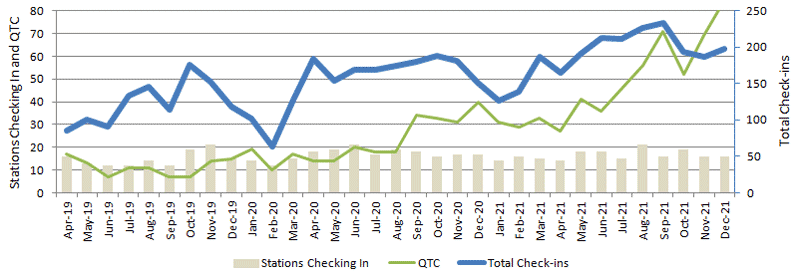
Here is the monthly net report, sent to all stations during the first NZ Net session of 2022:
NR1 R ZL1NZ 41/38 AUCKLAND 0800Z 3JAN22 = NZ NET = DECEMBER QNI ZL1AJY 5 ZL1ANY 18 ZL1BWG 22 ZL1NZ 23 ZL1PJH 8 ZL1RD 19 ZL2GD 15 ZL2GVA 19 ZL2IR 3 ZL2KE 9 ZL2LN 4 ZL2WT 15 ZL3TK 23 ZL4CU 6 ZL4KX 8 VK3DRQ 1 TOTAL 198 QTC 85 = ZL1NZ
Photo flashback
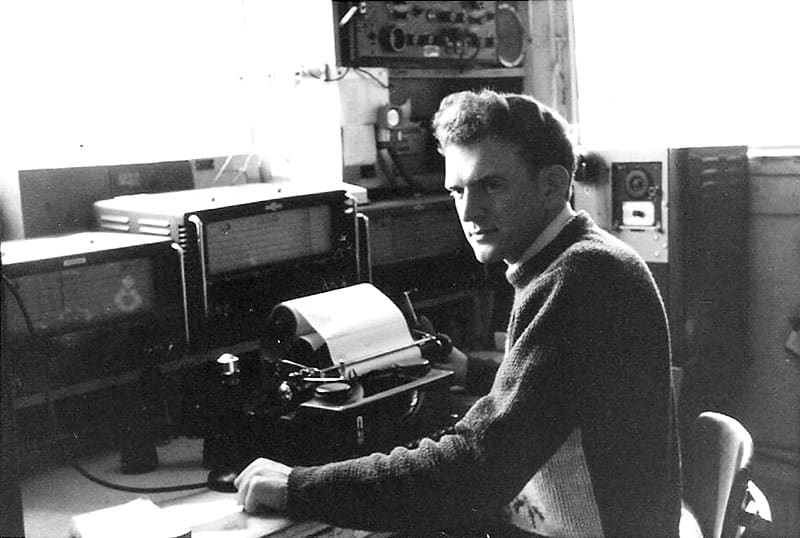
John Hill ZL2AYQ as a radio operator at Milford Sound Aeradio, c1973. The station maintained CW contact with Christchurch and Dunedin airports, using a pair of Collins 30K5 transmitters and, as you can see, a lot of Eddystone receivers. Photo courtesy J Hill and maritimeradio.org
Updated list of NZ Net member stations
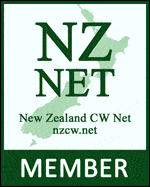 All amateur radio operators are welcome to check into the NZ Net. If an operator checks in at least 25 times during a 12-month period, they automatically become a Net Member. They remain a Net Member as long as they have made 25 or more check-ins during the preceding 12 months.
All amateur radio operators are welcome to check into the NZ Net. If an operator checks in at least 25 times during a 12-month period, they automatically become a Net Member. They remain a Net Member as long as they have made 25 or more check-ins during the preceding 12 months.
It’s interesting that we have no members in Wellington and I don’t think I’ve ever heard a Wellington station check in. Guess they’re all too busy running the country. 🙂
Stations that qualify as Net Members are welcome to display this badge on their QRZ.com page or elsewhere. Get badge.
Video: Interesting sideswipers
Here’s a really cool video from Midori JI3IVL in Osaka, demonstrating two types of sideswiper key.
She begins by using a home-brew rotary sideswiper, something I had never seen before. Perhaps I shouldn’t even call it a sideswiper, given the wrist action is rotary rather than side-to-side. Then she switches to a conventional sideswiper.
Producing decent-sounding CW on a sideswiper takes a lot of practice. Midori has it mastered!
Progress report from the key maker
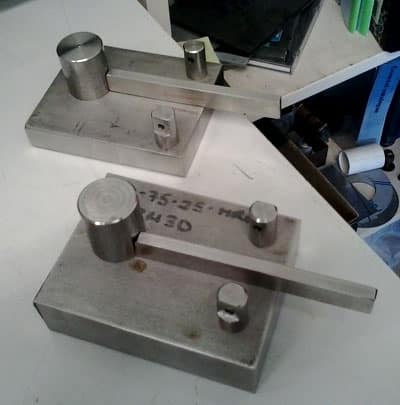 This is a quick follow-up to something I mentioned several weeks ago.
This is a quick follow-up to something I mentioned several weeks ago.
Gerard ZL2GVA has another key project on the go, and he sent this photo showing his progress.
What will these be? Stay tuned to find out.
Audio challenge
Here is a recording (courtesy N1EA) of a coast radio station. Your challenge is to gather the following information:
- callsign of the coast station
- its location (you’ll need to look that up)
- its QSX
[AUDIO NO LONGER AVAILABLE]
Please send your answers to me via radiogram.
The answer to the Audio Challenge in Net News 70 was Spike Milligan, to his wife, who was downstairs. I think they’d been having a disagreement. Correct answers were received from G4ETQ, ZL1ANY, ZL1BWG and ZL3TK.
Net tip: QRZ and QRZ?
QRZ – one of the most commonly heard Q Signals – seems to cause a bit of confusion, particularly when ops forget to include the question mark. Here’s how this signal is meant to work:
QRZ? means “Who is calling me?” and the question mark must be included to give it this meaning.
QRZ (without the question mark) means “You are being called by _____ (on _____ kHz).”
Notice that the second style does not have to be sent by the unknown station. For example:
ZL1NZ: ZL2KE DE ZL1NZ QRZ? (who is calling me?) ZL2KE: QRZ VK3DRQ (you are being called by VK3DRQ)
Notice, too, that QRZ includes the option of indicating a frequency. We’re unlikely to need that in amateur radio, but it would be helpful, for example, if a coast station was monitoring multiple frequencies and a ship was trying to get their attention on one of them.
Advertising archive
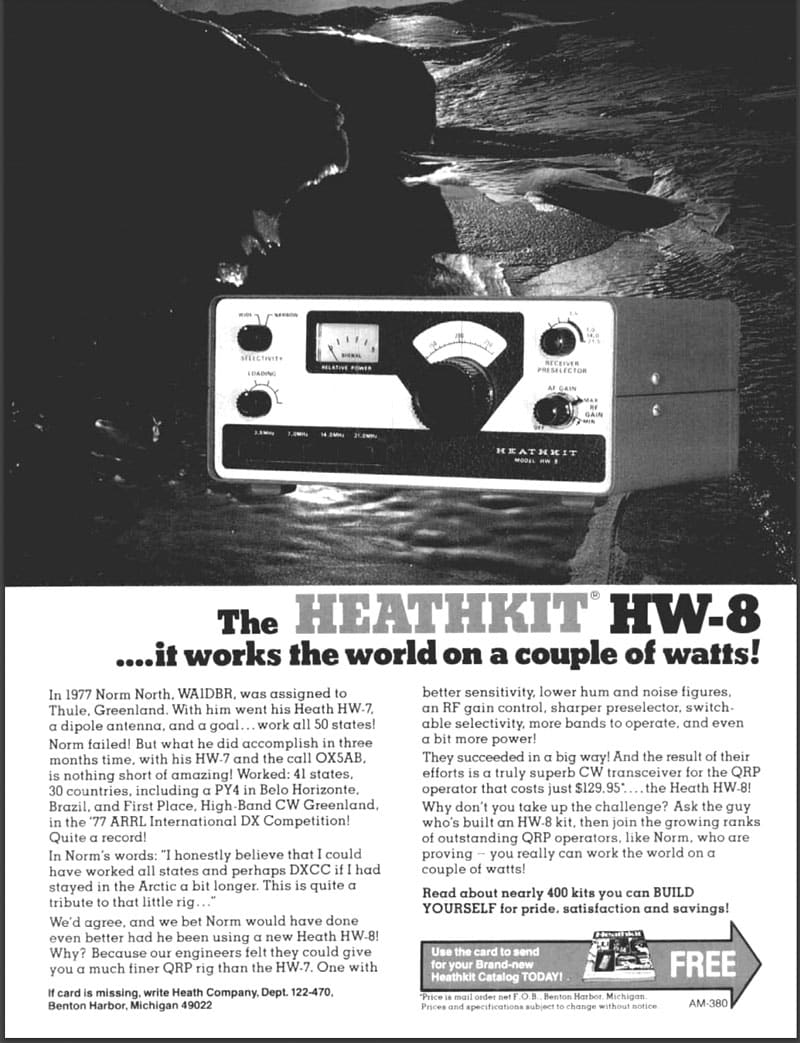
Ham Radio magazine, November 1978
Suggestions?
If you have suggestions on how to make the NZ Net better, or things you’d like to see covered in these updates, please contact ZL1NZ. You might even like to write something for the newsletter.
Thanks for reading, and I hope to hear you soon on the NZ Net!
—
Neil Sanderson ZL1NZ, Net Manager
New Zealand Net (NZ NET)
3535.0 kHz at 9pm NZT Mon-Fri


